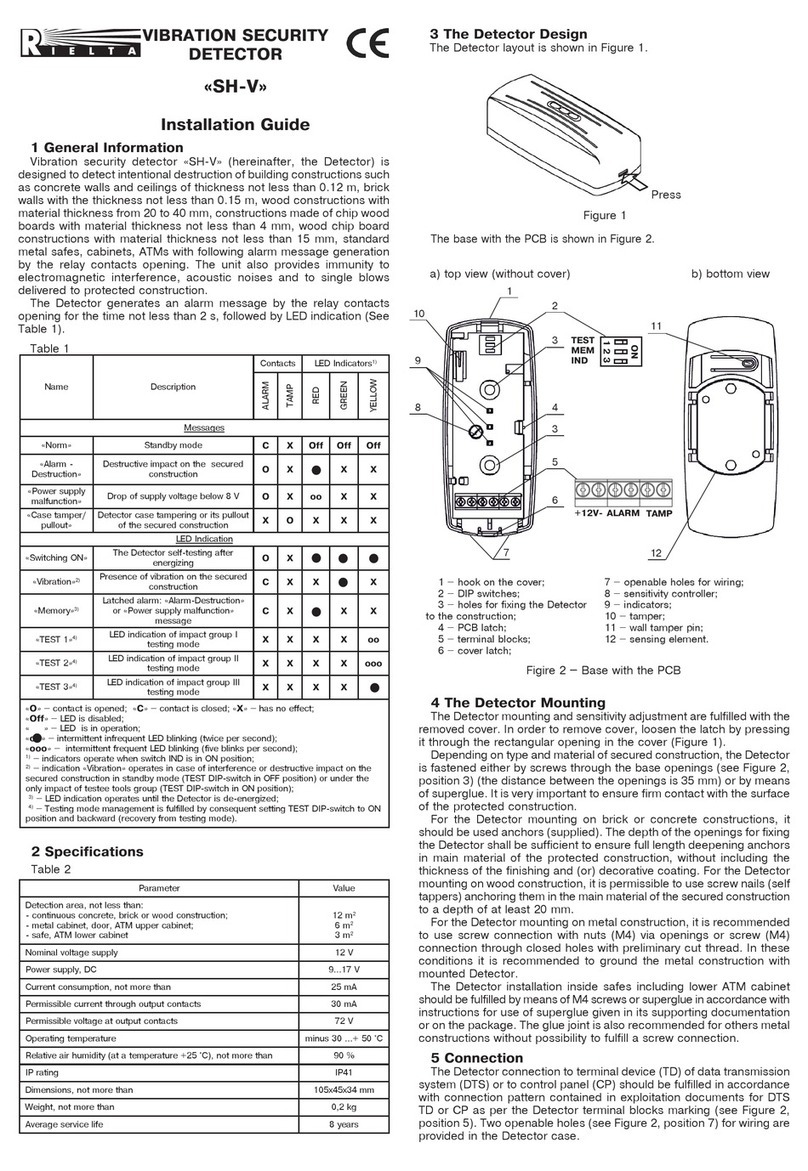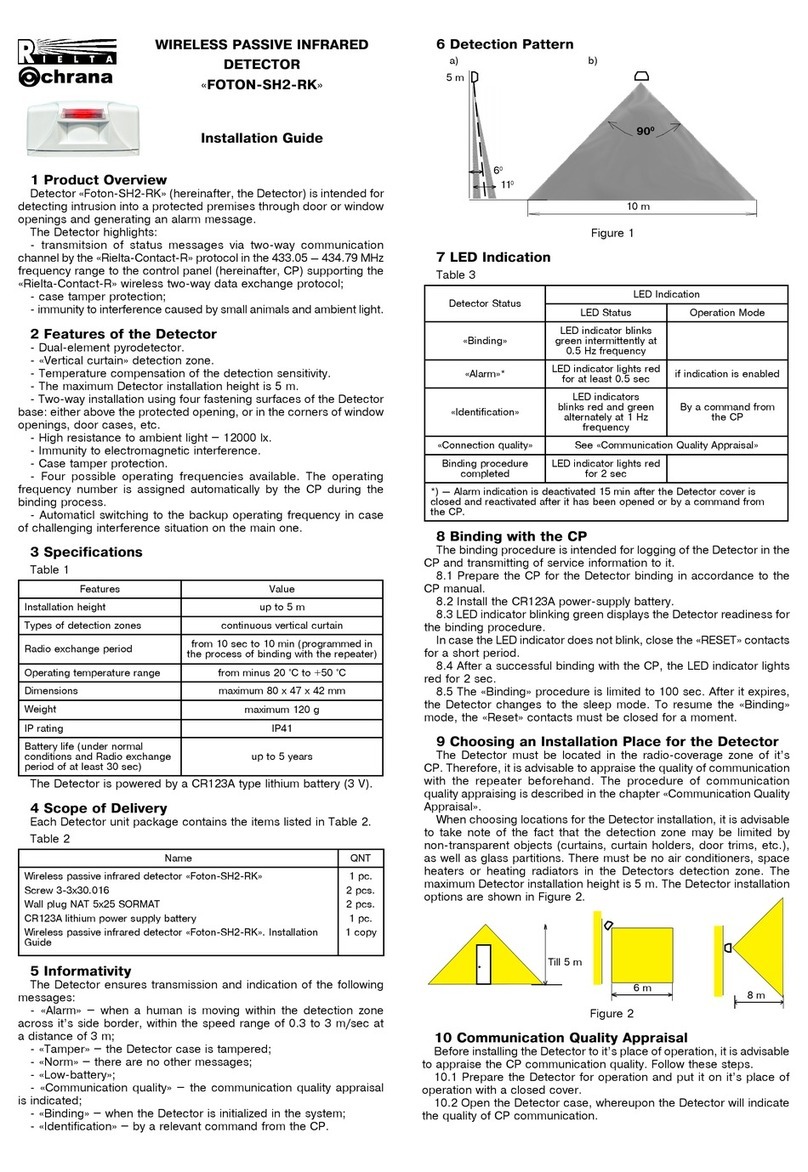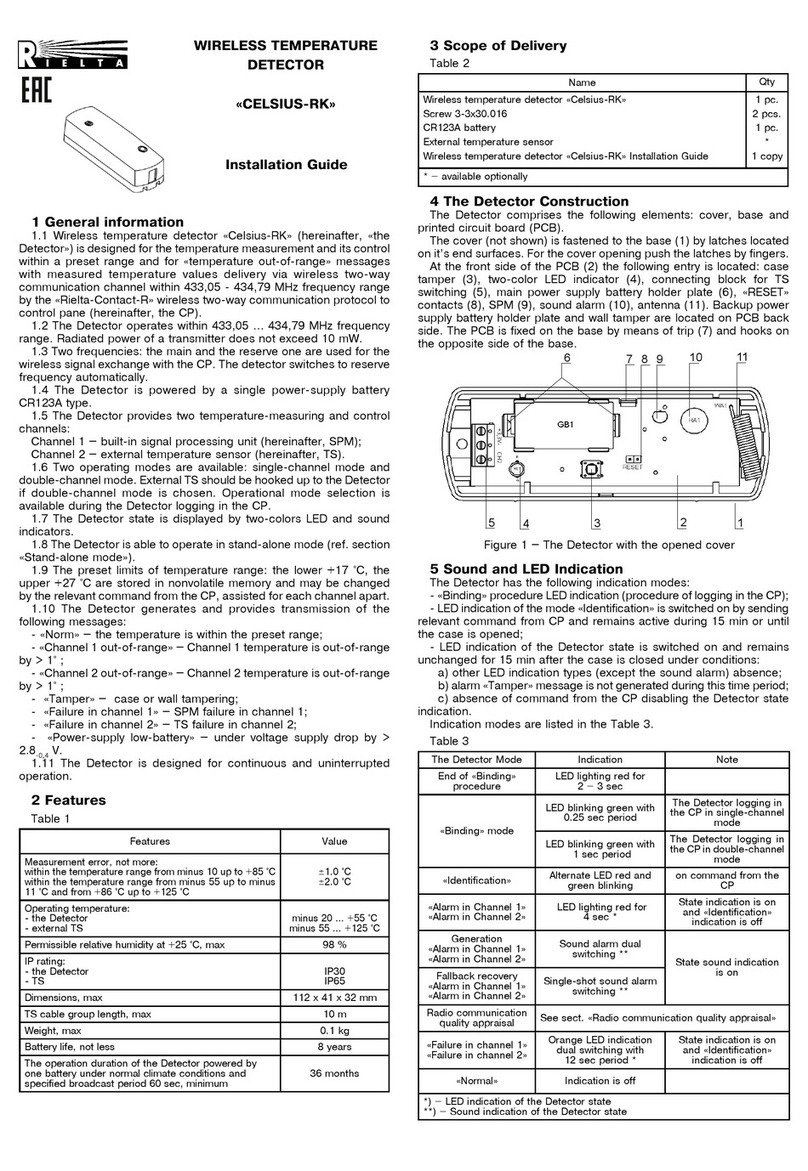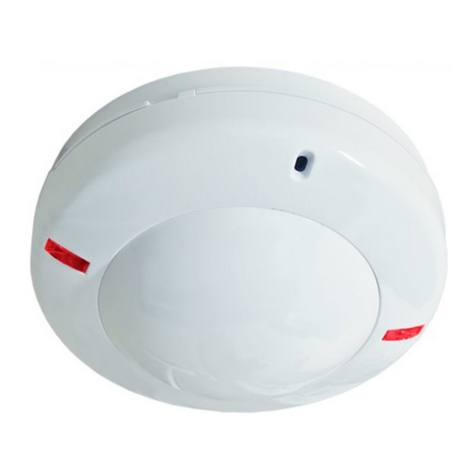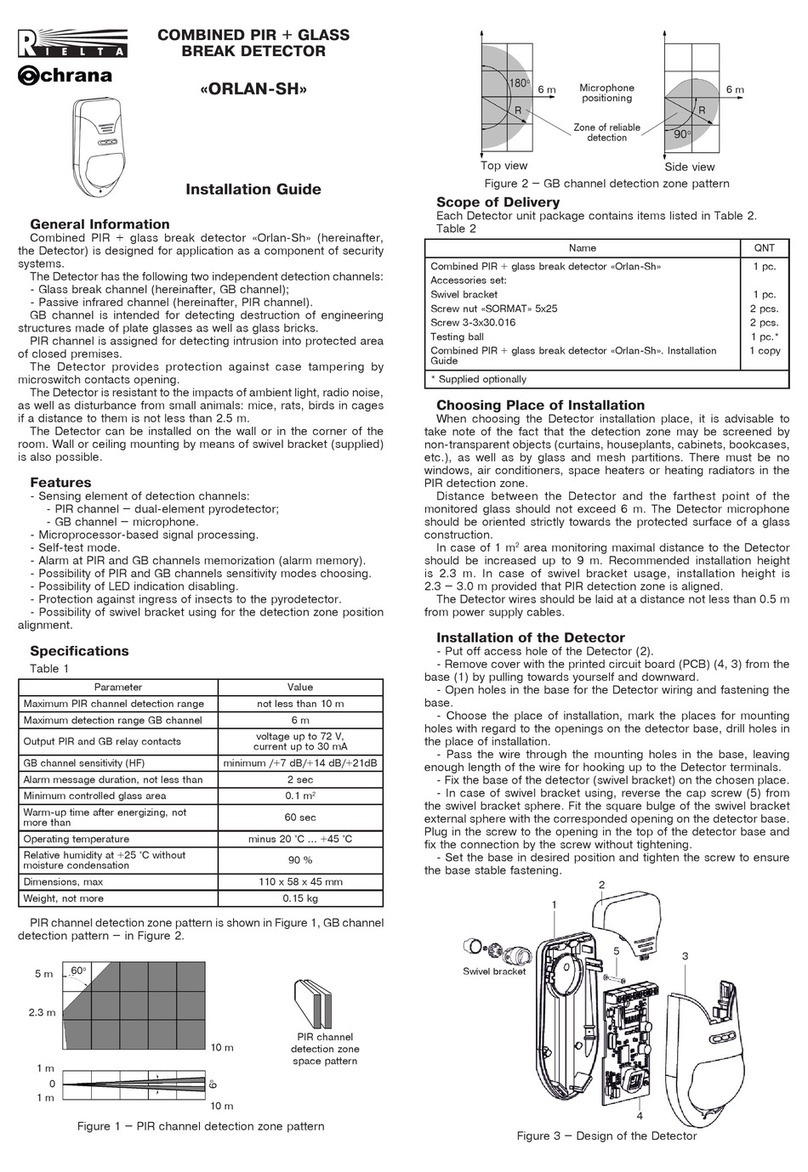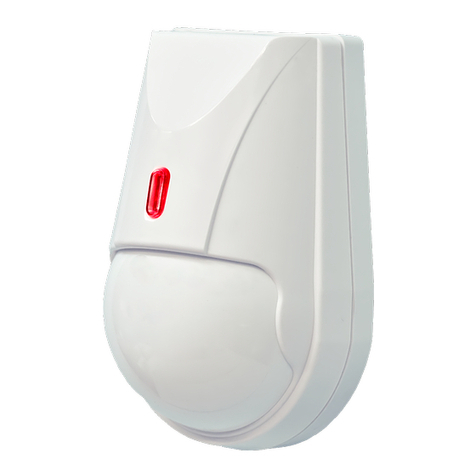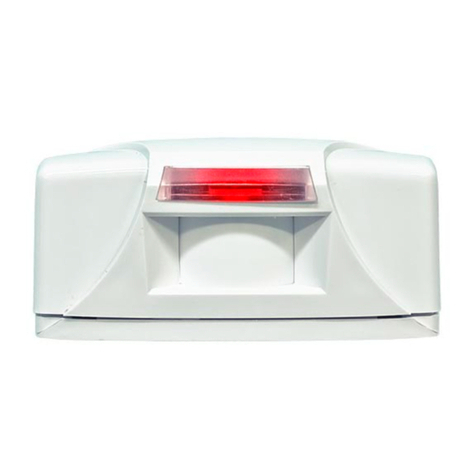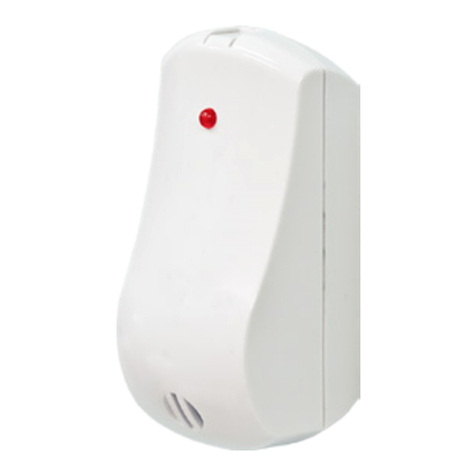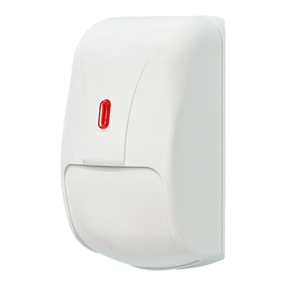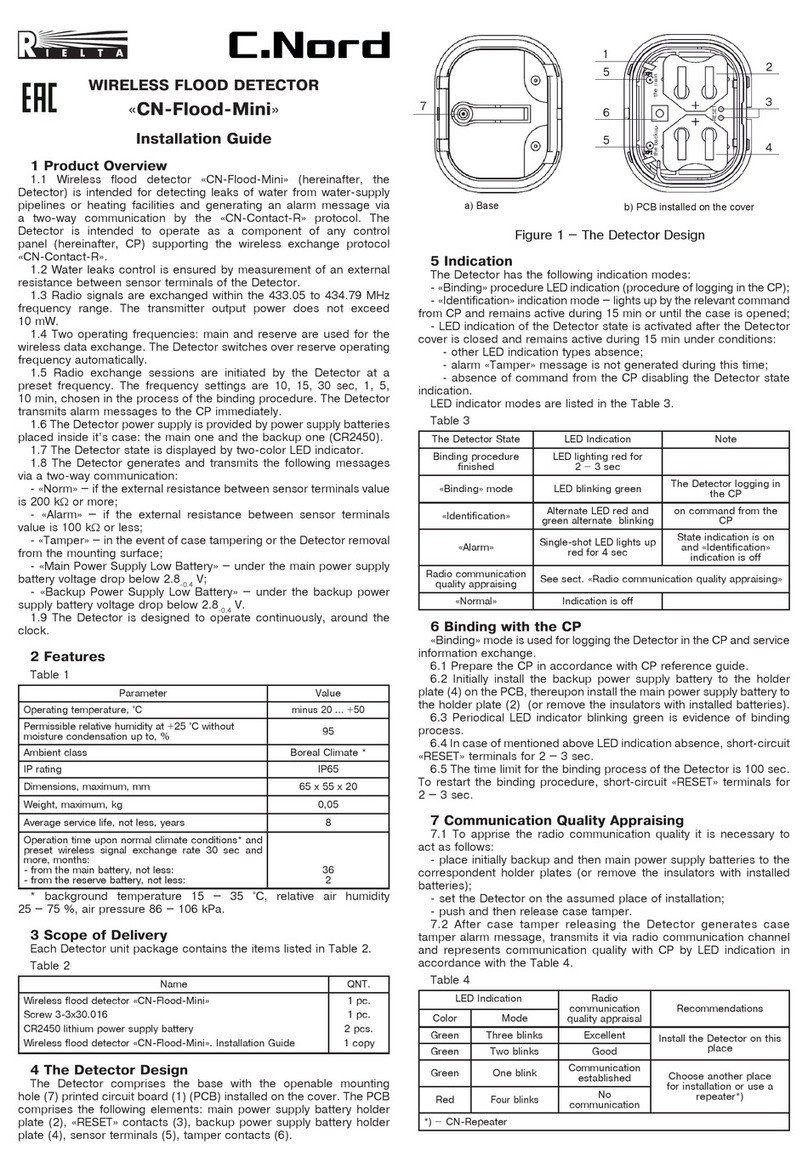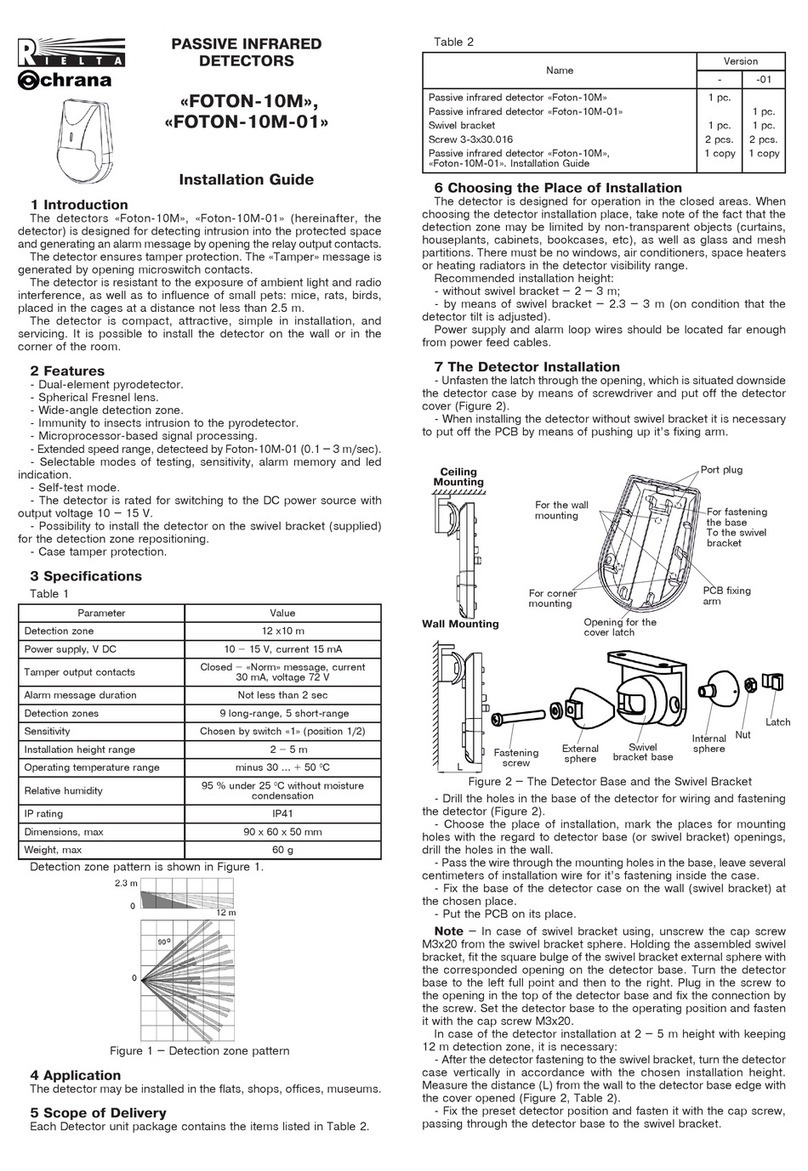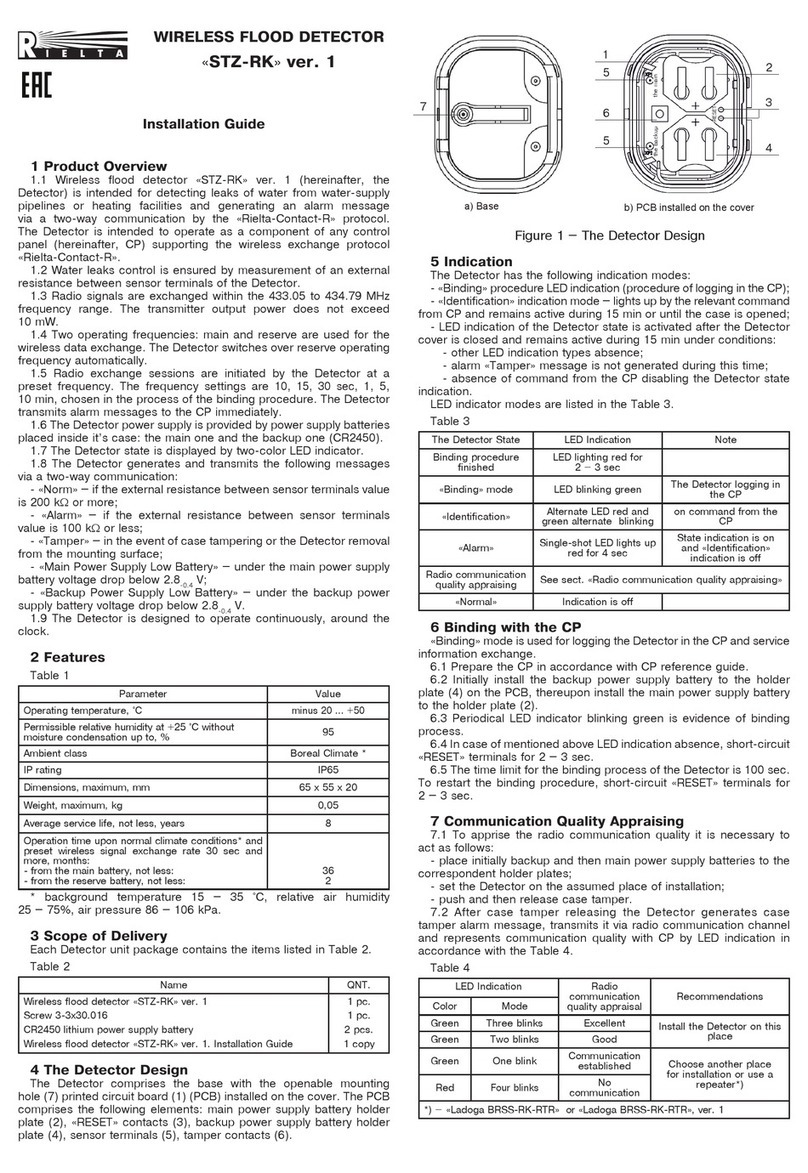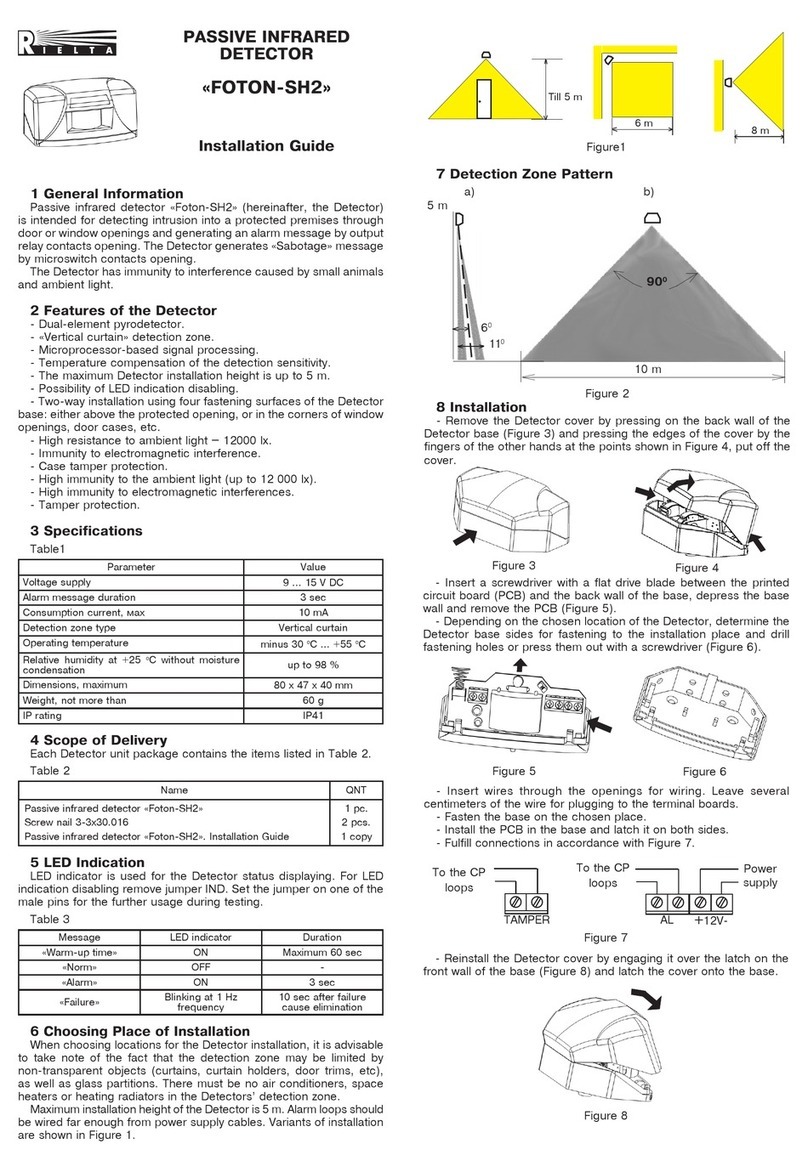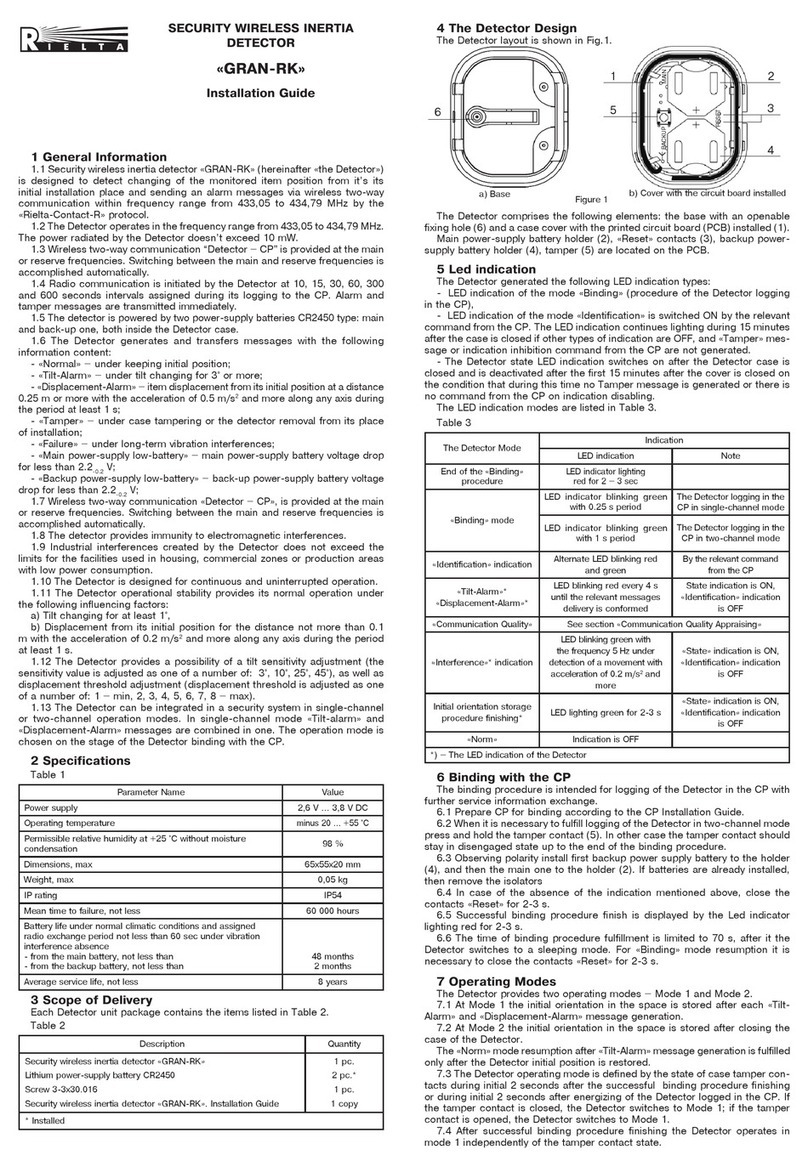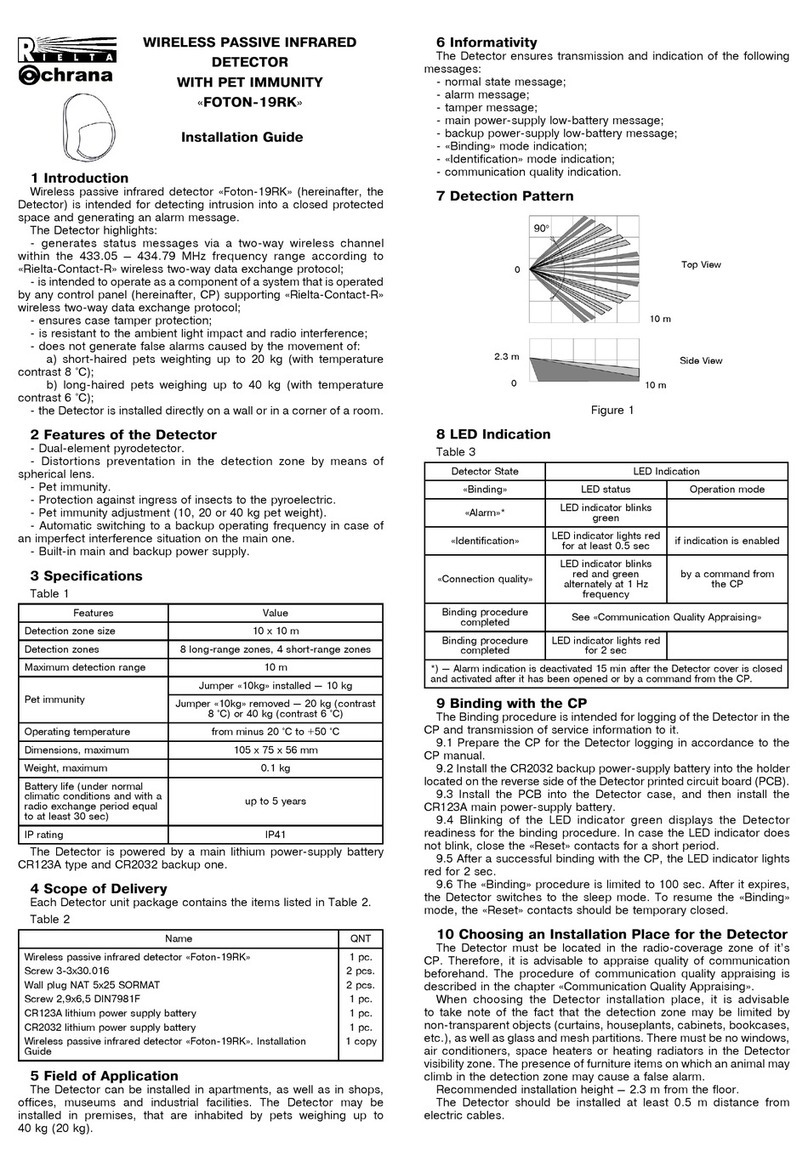
Table 3, continuation
The Detector Mode Indication Note
«Failure in channel 1»
«Failure in channel 2»
Orange LED indication dual
blinking with 12 sec period *
State indication
is on and
«Identification»
indication is off
«Normal» Indication is off
*) – LED indication of the Detector state
**) – Sound indication of the Detector state
6
Binding with the CP
«
Binding
»
mode is used for logging the Detector in the CP and service
information exchange.
6.1 Prepare the CP in accordance with CP reference guide.
6.2 If it is necessary to log the Detector in double-channel mode, hook up TS
to the Detector as shown in Figure or short-circuit the terminals of the Detector
«
-
»
and
«
G 2
»
. For the single-channel mode neither hooking on, no short-circuit
is required.
6.3 Insert backup battery to the holder plate(10) (if the battery is already set
into the holder, than pull out the insulating foil)
6.4 Insert main battery to the holder plate(5) (if the battery is already set into
the holder, than pull out the insulating foil).
6.5 Periodical LED indicator blinking green is evidence of binding process.
6.6 In case of mentioned above LED indication absence, short-circuit
«
Reset
»
terminals for 2 – 3 sec.
6.7 Successful binding procedure complying is indicated by LED indicator
lighting red for 2 – 3 sec.
6.8 The time limit for the binding process of the Detector is 70 sec. To restart
the binding procedure, short-circuit
«
Reset
»
terminals for 2 – 3 sec.
7
«
Stand Alone
»
mode
7.1 The Detector changes to stand alone mode upon the expiry of 100 sec
binding procedure.
7.2 During operation in the stand alone mode LED and sound indication is
always ON under condition of
«
Tamper
»
message absence.
7.3 The Detector has no communication with CP and its state is displayed
only by means of LED and sound indication (see Table 4).
Table 4
The Detector Mode Indication Period
«Main battery discharge»
«Backup battery discharge»
LED lighting orange for 2 sec
Sound indicator single-shot actuation 12 s
«Alarm in Loop 1»
«Alarm in Loop 2»
LED lighting red for 2 sec
Sound indicator single-shot actuation 4 s
«Failure in Loop 1»
«Failure in Loop 2»
Double-shot LED lighting orange for 2 sec
Sound indicator single-shot actuation 12 s
«Norm» Green LED single-shot blinking 12 s
8 Communication Quality Appraisal
8.1 For radio communication quality appraisal it is necessary to:
- set the Detector on the assumed place of installation;
- push and then release case tamper.
8.2 After case tamper releasing the Detector generates case tamper
alarm message, transmits it via radio communication channel and represents
communication quality with CP by LED indication in accordance with the Table 4.
Table 4
LED Indication Radio
communication
quality appraisal
Recommendations
Color Mode
Green Three
blinks Excellent Install the Detector on
this place
Green Two blinks Good
Green One blink Communication
established Choose another place
for installation or use a
repeater*)
Red Four blinks No communication
*) – «Ladoga-RK» system repeater
9 Installation
9.1 Drill holes for fastening the Detector elements. You may use the FD and
the SPM base without the PCB for marking out the holes.
The FS should be located in the place, where the water spilled in the
detection zone close the sensor contacts. The FS installation with the terminals
downwards ensures generation of alarm signal over appearance the liquid sheet
with a thickness exceeding 1 mm. The FS installation with the terminals sidewise
provides easy access to the sensor terminals for removal of a liquid from the FS
surface between the terminals after the leakage elimination.
9.2 Fasten the FS on the mounting surface with screws or a water-resistant
glue. Fasten the SPM base on the mounting surface with screws. For the wall-
tamper monitoring, the second screw must be screwed in a hole under the wall
tamper. Install the PCB, connect the FSs to the loop terminals (the red wire to
the «+» terminal). Install the cover.
«RIELA» JSC, www.rielta.com,
tel./fax: +7 (812) 233-0302, 703-1360,
Made in Russia
Rev. 4 of 19.02.18
№Э00439
v.11.1/ v.12
10 Troubleshooting
Table 5
CP Message Elimination Procedure
«Tamper» Check the security of the SPM fastening, close
it’s cover
«Alarm in Loop 1»
«Alarm in Loop 2»
In case there is no liquid (moisture) between the
FS contacts, check the absence of a short circuit
between the wires
«Failure in Loop 1»
«Failure in Loop 2»
Check the integrity of the wires connecting the
FS and the SPM and their fastening to the SPM
terminals
«Main power supply
battery fault»
Replace the main power supply battery and the
backup one
«Backup power supply
battery fault» Replace the backup power supply battery
11 Manufacturer’s Guarantees
11.1 The manufacturer guarantees conformity of the Detector to the
requirements of technical conditions provided the transportation, storage,
installation and operation conditions are observed.
11.2 The guaranteed shelf life of the Detector is 63 months since the date of
manufacture. The guaranteed useful life is 60 months since the day of putting
into operation within the limits of the guaranteed shelf life.
11.3 The detectors that are found non-conforming to the requirements of the
specifications will be repaired by the manufacturer, provided the installation and
operation rules have been observed.
Note – Warranty obligations do not apply to batteries.
12 Storage and Transportation
12.1
The Detectors are transported without power supply battery. The De-
tector in their original packaging are resistant to:
- transport jolting with the acceleration up to 30 m/sec2at impact frequency
range from 10 to 120 per minute or 15 000 strikes;
- ambient temperature range minus 50 ... +50 °С;
- relative air humidity (95 ± 3) % at a temperature +35 °С.
12.2 The Detector in original package may be transported by any means
of transportation in closed vehicles over any distances in compliance with the
existing shipping rules concerning the respective means of transportation.
13.3 After transportation under the conditions different to exploitation
conditions the Detector shall be ready to operate after a maximum of six hours.
14.4 The storage room shall be free from current-conducting dust, acid va-
pors, alkali and gases that cause corrosion and destroy insulation.
13 Packing Certificate
Wireless flood sensor «STZ-RK» manufactured in accordance with current
technical documentation is classified as fit for operation and is packed by
«RIELTA» JSC.
Packing date _______________________________
month, year
Figure 3 - SPM base
9.3 Fasten the FS on the mounting surface
with screws or a water-resistant glue. Fasten
the SPM base on the mounting surface with
screws. To ensure the wall-tamper control,
the second screw must be screwed in the wall
tamper fixing arm. Install the PCB, connect
the FSs to the loop terminals in accordance
with the Figure 1 . Install the cover.
ATTENTION! Antenna should be installed
into the holder (see Figure 3). Antenna
installation outside of the holder essentially
reduces communication range.
Fixation holes for
fastening base to
mounting surface
Antenna holder
Wall tamper fixing
arm
